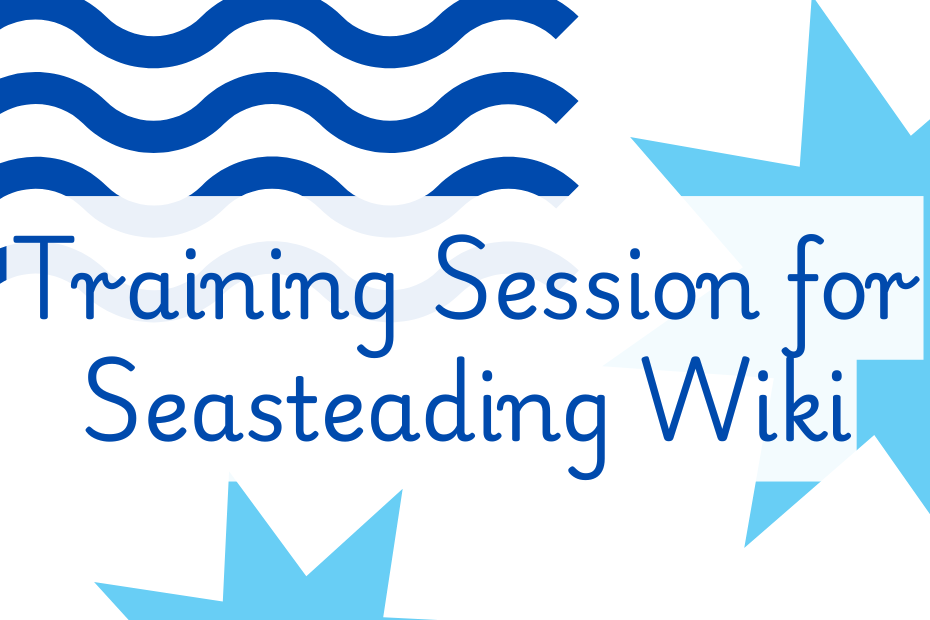I’ve been working for over a year on a new version of the Seasteading book, incorporating all we’ve learned since starting TSI. Book progress has been very slow given my many duties at TSI, like raising the funds to keep the organization alive. However it has become increasingly clear from discussions how vital and urgent it is to have a detailed, up-to-date motivation and strategy compiled into one polished piece. We may do a good job of communicating our core vision – startup countries in international waters – but the full detail behind that vision basically lives in just one place right now – my head. This results in frequent misinterpretations of our strategy and me answering the same questions again and again, which is not effective.
Fortunately we have a little breathing room with fundraising (thanks to our 2010 donors!), and my current 2-month personal trip to India for medical tourism provides a perfect opportunity for isolation and authorial productivity. So it’s time for me to take a break from the urgent and spend some time on the important – creating the ultimate Seasteading handbook: a guide to why this is an incredibly promising way to improve the world, how to tackle this insanely audacious challenge, and a call to action on how motivated individuals can help.
Fortunately we have a wealth of previously-written material to draw from. Unfortunately, we don’t yet have a book proposal to send to agents and publishers, and the time lag in the publishing industry is quite long – a year from sending a proposal to getting published is actually quite quick. So we need to get a book proposal written and out ASAP. (See Tim Ferriss on why we’re going the traditional route).
A book proposal is roughly 20 – 50 pages in length. It includes many elements which are very useful later for writing and promotion, but make the proposal a lot more than just a few pages about why this would be a cool book. It’s a significant undertaking – which is why we need your help.
If you have some spare time to provide feedback about elements of our book proposal, and perhaps even help us with some research, please join the Book Feedback mailing list. Additionally, if you are technically skilled with git and LaTeX (the technologies we’re using for collaboration & typesetting), please join the Technical Book mailing list. We have a lot of important work to do quickly, and we need your help to make it happen.
|
Join our Book Feedback List Because You Rock With Words! |
Join our Book Technical List Because You Rock With Code! |
Thanks!
- Patri
p.s. Here’s a sneak preview of the rough, latest outline for the first major section of the book – Why Seastead? Join the feedback list if you want to see more detail or future sections, like How To Seastead!
Section 1: Why Seastead: Bringing Progress To Politics
- 1.1: Introduction
- 1.1.1: Introductory Story
- 1.1.2: Executive Summary
- 1.1.3: How To Think About People, Society, And Government
- 1.2: Human Progress: History and Opportunity
- 1.2.1: A Brief History Of Human Progress: Technology & Advancement
- 1.2.2: The Laggard: Social And Political Organization
- 1.2.3: The Opportunity: What If Social Tech Advanced Like Most Technologies?
- 1.3: Why Is Progress So Slow In Social Tech?
- 1.3.1: Progress and Complexity
- 1.3.2: Three Levels Of Politics: Overview
- 1.3.3: Level 1: Rules & Rulers
- 1.3.4: Level 2: Meta-Rules & Systems
- 1.3.5: Level 3: The Government Industry
- 1.3.6: Levels, Intervention, Activism
- 1.3.7: Addendum: Folk Activism: Why We Act Ineffectively
- 1.4: The Answer: Social Startups On The Blue Frontier
- 1.4.1: Startups And Experiments
- 1.4.2: The Frontier: We Had A Startup Incubator, But It’s Out Of Business
- 1.4.3: Thought Experiment 1: Lowering The Barrier To Entry
- 1.4.4: Thought Experiment 2: Dynamic Geography
- 1.4.5: The Ocean Is The Next Frontier – Has Right Properties!
- 1.4.6: Addendum: Space
- 1.5: A New Way Of Thinking
- 1.5.1: Trendy Trends That We’re Trending With
- 1.5.2: Addendum: Other Forms of Competitive Government
